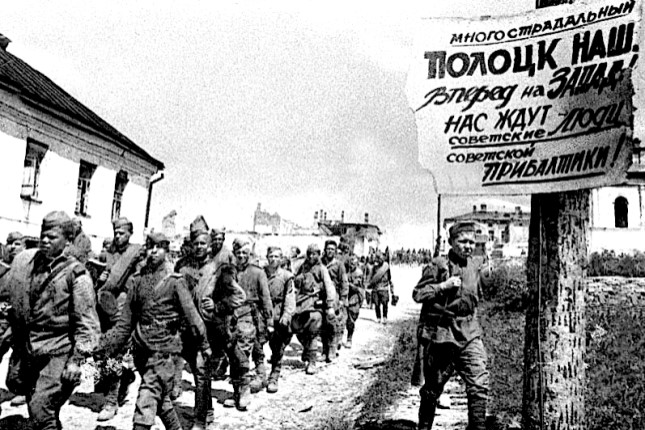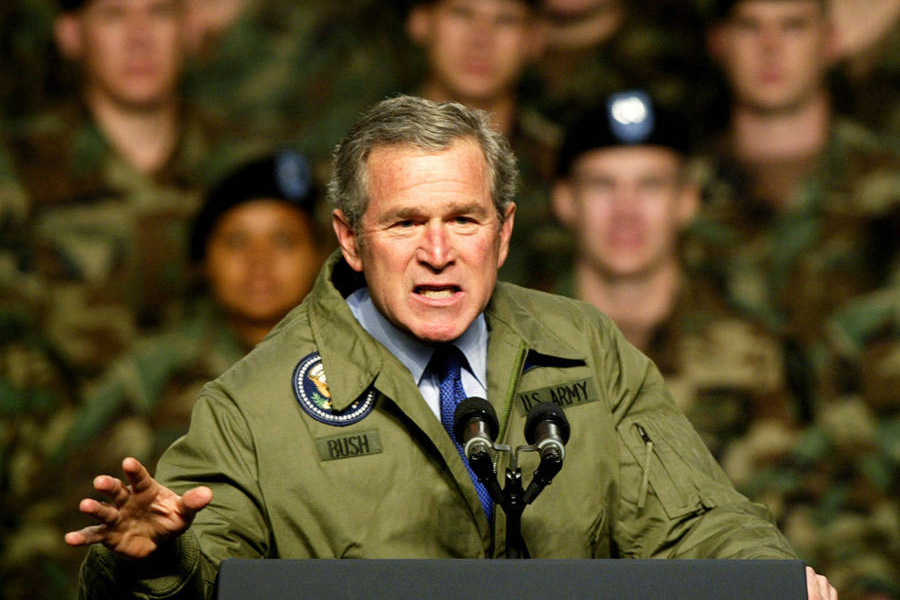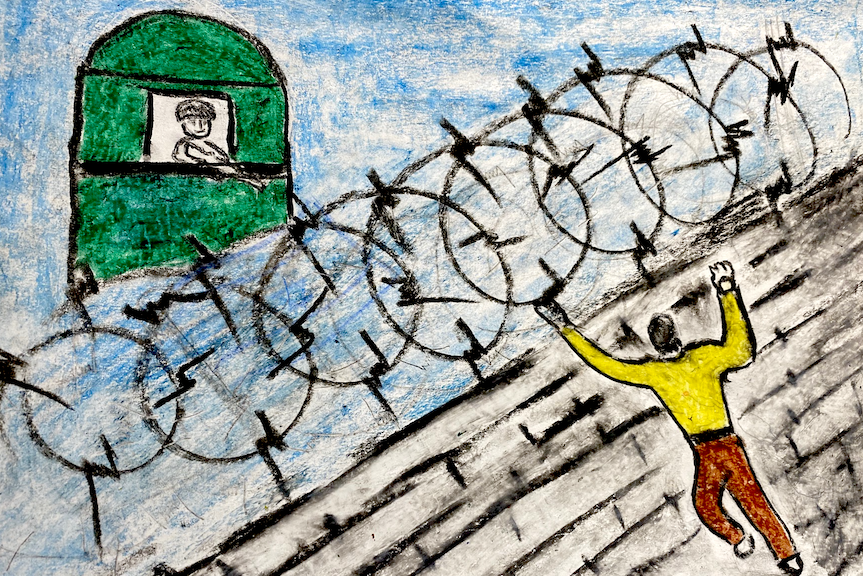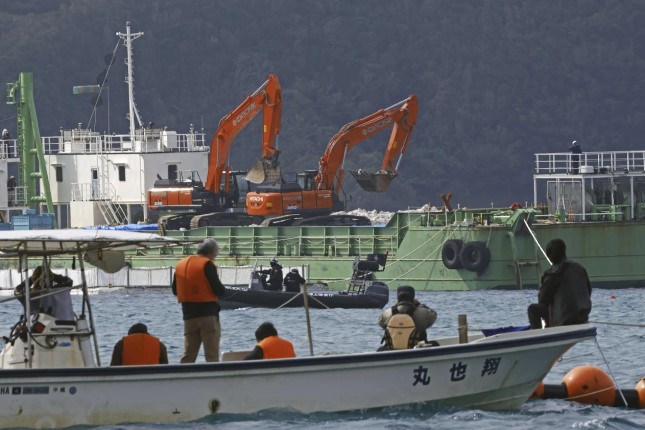Operation Bagration, unleashed by the Red Army on 22 June 1944, was the D-Day of the Eastern Front. In scope, size, scale and impact, it was a feat of arms unmatched in World War II.
Crucially, Overlord (D-Day) — which the Western Allies mounted on 6 June 1944 — and Bagration were planned and undertaken as part of a coordinated effort on the part of the Grand Alliance to break the back of German resistance in Europe. This with a determination that was equally held by the Soviets, British and Americans to force the unconditional surrender of Hitler’s Germany.
In his magisterial book Stalin’s Wars Geoffrey Roberts reveals that “Soviet plans for Operation Bagration were closely co-ordinated with Anglo-American preparations for the launch of the long-awaited Second Front in France. The Soviets were informed of the approximate date of D-Day in early April and, on 18 April, Stalin cabled Roosevelt and Churchill to inform them that ‘as agreed in Tehran, the Red Army will launch a new offensive at the same time so as to give maximum support to the Anglo-American operation.’”
Though both operations were of immense military and strategic importance, Bagration dwarfed Overlord in scale and impact. Launched three weeks after D-Day on the third anniversary of the Nazi invasion of the Soviet Union in 1941, it began with air attacks on enemy artillery positions and concentrations, guided by partisan units operating behind German lines. The main offensive began on 23 June along a 500-mile front, involving close to 2 million troops.
Operation Bagration was designed to effect the complete liberation of the Soviet territory from the Nazis and destroy the Wehrmacht as a serious fighting force in the East. It achieved all three of those objectives and more.
As British historian and author David Reynolds points out: “In five weeks the Red Army advanced 450 miles, driving through Minsk to the outskirts of Warsaw and tearing the guts out of Hitler’s Army Group Centre. Nearly 20 German divisions were totally destroyed and another 50 severely mauled — an even worse disaster than Stalingrad.”
He goes on: “This stunning Soviet success occurred while Overlord was still stuck in the hedges and lanes of Normandy.”
Famed Soviet journalist and author, Vasily Grossman, described with customary force and power the human toll of the Soviet offensive: “Corpses, hundreds and thousands of them, pave the road, lie in ditches, under the pines, in the green barley. In some places, vehicles have to drive over the corpses, so densely they lie upon the ground.”
Despite the coordination of Operation Bagration with D-Day, and despite the former’s ineffable military and strategic importance, not one mention was made of it during the 75th D-Day anniversary commemorations in Northern France in 2019. Such a glaring and unconscionable omission stands as just one of many shameful examples of historical amnesia on the part of Western governments and ideologues in recent years — people more concerned with politicising history than they are with respecting it.
The valour and courage of the 156,000 troops who landed on the Normandy beaches on 6 June 1944 is not in question, nor is that of the thousands of sailors, airmen, and airborne troops who also took part in the landings. Indeed, Operation Overlord was and will likely remain the largest amphibious military assault ever mounted, and also the most successful.
In terms of its ambition, planning and the coordination of the combined military forces of the multiple nations involved, it truly deserves the place in military history that it commands. None other than Soviet leader Joseph Stalin understood the importance and achievement of Overlord, which he set out in a congratulatory telegram to Roosevelt and Churchill at the time: “As is evident, the landing, conceived on a grandiose scale, has succeeded completely. My colleagues and I cannot but admit that the history of warfare knows no other like undertaking from the point of view of its scale, its vast conception, and its masterly execution.”
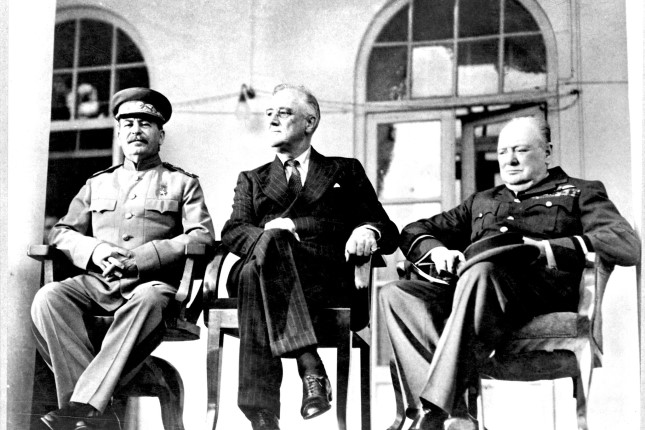
From left: Stalin, Roosevelt and Churchill on the portico of the Soviet embassy during the Tehran Conference in November 1943. Photo: Wikimedia Commons / Public domain.
Wind things forward and over seven decades on the parlous quality of statesmanship in the West, with the open violation of the spirit of the Grand Alliance between East and West enshrined in Stalin’s telegram, has never been more lamentable.
The notion that the men who gave their lives on D-Day, and thereafter across Europe on the way to war’s end in 1945, did so in order to give birth to a continent dependent on Washington and in fear of Moscow, is preposterous. The devastation that Russia suffered in the war, the magnitude of the losses the country incurred, demands the respect and reverence of everyone interested in drawing the right lessons from this epic struggle of world-historical importance.
A Europe liberated from fascism but divided by a Cold War afterwards reminds us that, although so much was sacrificed and won by so many during the war, so much was thrown away and lost by so few after it.
Operation Bagration and Operation Overlord should never be spoken of separately. Both were mounted at the same stage in the war by a Grand Alliance that contained within it the seeds of a future that, if had come to pass, would have justified the scale of the sacrifice needed to emerge victorious.
The last word goes to Vasily Grossman: “Nearly everyone believed that good would triumph, that honest men, who hadn’t hesitated to sacrifice their lives, would be able to build a good and just life.”
Amen to that.
Main photo: Soviet soldiers in Polozk, Belarus, July 4, 1944; propaganda poster on right celebrates the reconquest of the city and urges the liberation of the Baltic from Nazi German occupation © Wikimedia Commons / Public domain.
Source: Consortium News.
